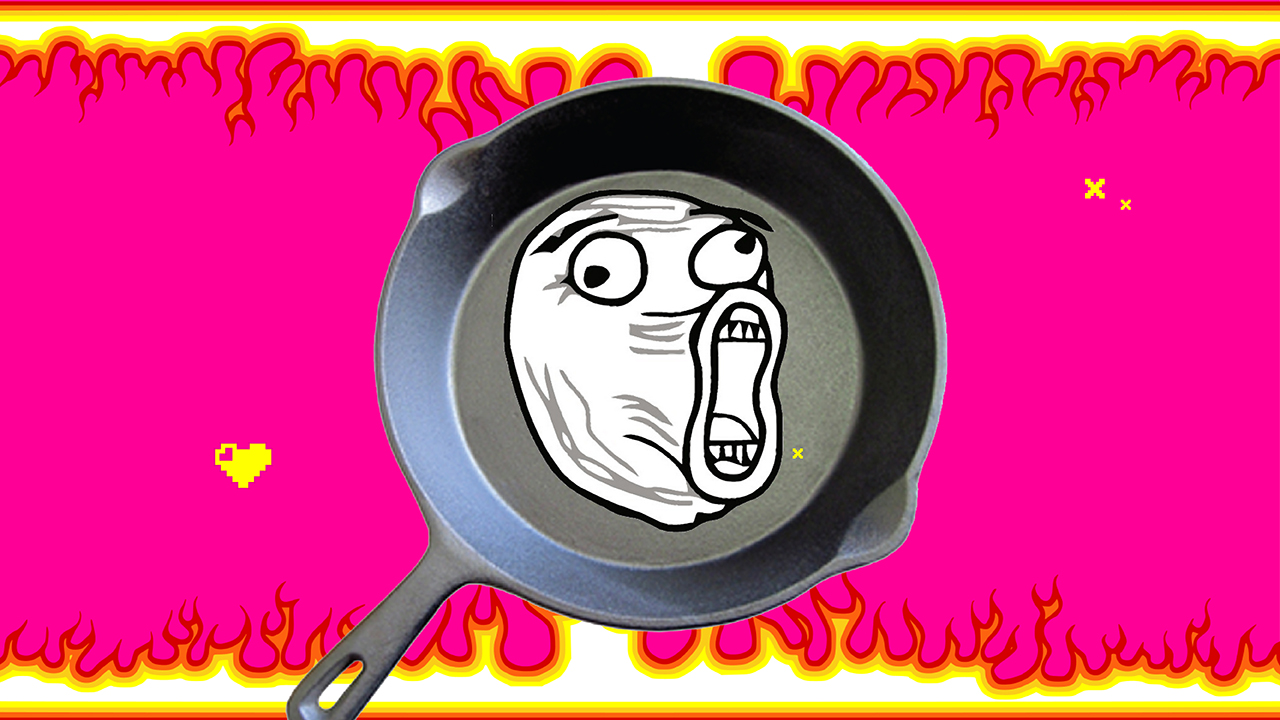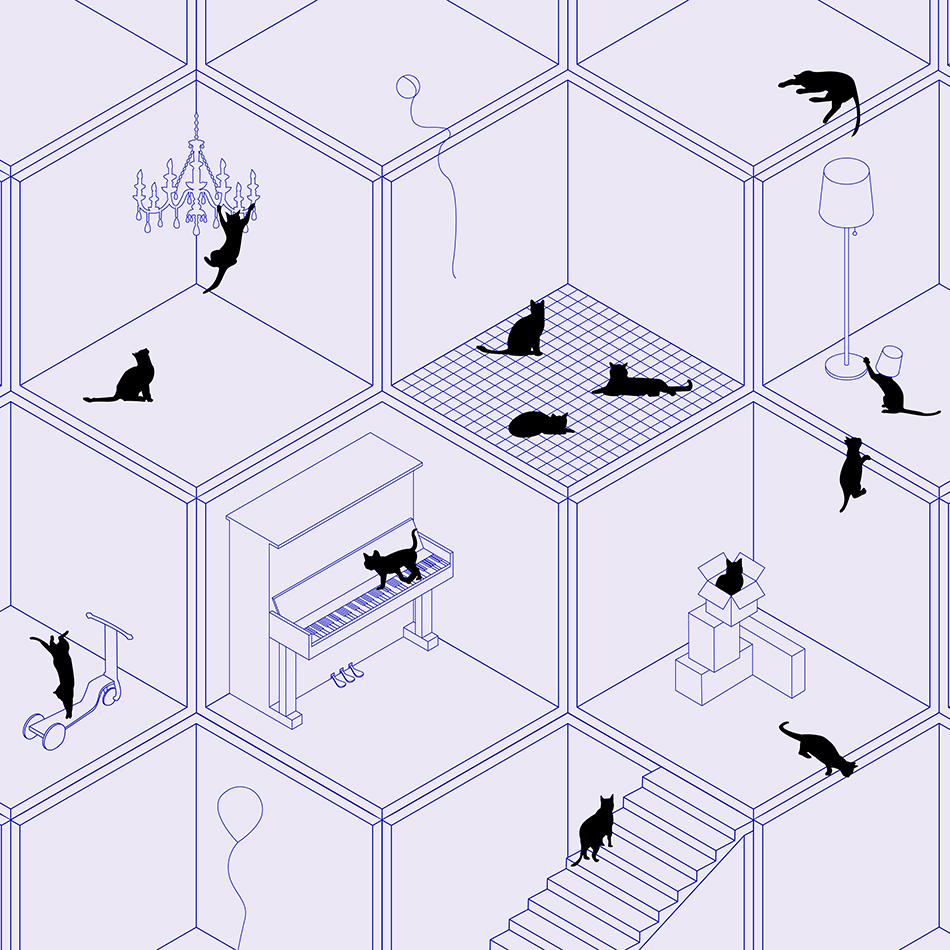by Laxmi Krishnan

The theorization around memes as solitary units as well as interlinked beings exists in contradictions and debates that keep redefining what memes really mean and how they function. Of all debates that exist in this space, the prominent one is an attempt at categorizing the idea and culture of a meme as either a germ or a gene. The former discourse emerges from an angle of contagion, looking at the meme as an element that resembles agents of disease, embracing virality for self-sustenance. The latter is an offshoot of Darwin’s theory of evolutionary genetics, looking at culture through the lens of genetic transmission as opposed to an epidemic, positing memes as an element that codifies and furthers culture. Dawkins, a prominent theorist who coined the term “meme” off of the concept of gene in an attempt to describe Memes states:
Examples of memes are tunes, ideas, catch-phrases, clothes fashions, ways of making pots or arches. Richard Dawkins writes that just as genes propagate themselves in the gene pool by leaping from body to body via sperms or eggs, so memes propagate themselves in the meme pool by leaping from brain to brain via a process which, in the broad sense, can be called imitation.
Dawkins defining memes as imitation further complicate and blurs the line between the germ and the gene approach to the understanding of memes. Susan Blackmore concurs as she states “Behavior and ideas copied from person to person by imitation – memes – may have forced human genes to make us what we are today” (Blackmore, 2000). However, the contention becomes a lens to view memes in two apparently different lights. As a germ, memes are contingent upon the idea of virality, a contagion that turns itself into a cultural epidemic, converting viewers into audiences of a particular culture, welcoming them into a discourse where they can “catch on” to what takes on the whole world around them, modifying their interactions with the meme as well as the culture around them. As a gene, memes are contingent upon recreation, reproducing themselves into varied contexts and cultures, coding, recoding, and adapting themselves as they go along, not only to merely exist but also to stay relevant and become an element that truly fits and survives in a culture. Imitation becomes a form of reproduction, an opportunity to reconstruct and attain a position that is amiably imitable in nature, leaving behind what becomes irrelevant, mutating through existing discourses to form newer ones and survive in and after them. Memes challenge their own memetic constructions and reconfigure them to sustain through cultures over carriers.
Looking at memes as a germ, it is not hard to notice that the germination turns into a contagion only with the right carriers in place. This contestation would believe that memes do not technically reconfigure themselves in the genetic sense, they emerge from a core and transmit through the carriers who interact with this meme and this fusion of the carrier’s position to the original germ leads to a newer form of a variant that catches on and affects newer viewers and in extension, newer cultures. However, this would also lead to a logical conclusion – when there are no more carriers who become the transmitters of this contagion – a meme ends. Meme as a gene inherently believes in the survival of the fittest and therefore one can never really mourn the death of a meme because it will recreate its relevance into the culture by employing internal modifications and external fusions and parallelly running at the risk of becoming irrelevant to a specific culture that it originated from due to too many mutations and modifications. A germ-led analysis of memes doesn’t imagine a possibility for mutations or reconfigurations as the minutest change will lead to the formation of what we understand as a “new germ” with different effects, therefore changing the whole track of an effect which cannot be grouped under one category that qualifies as a viral thought contagion.
Looking at memes as a gene denies fixities, looks at every meme an upgrade on the previous one, a newer build-up of relevance that would sustain and yield newer possibilities as well as promise longevity whereas looking at a meme as a Germ attempts to fixate what is understood as a germ through excluding everything that is not in the genetic build-up of that particular germ and therefore the effect of it. The aspect of virality and relevance which is often referred to as “relatability” is highly essential to the understanding of how memes stay relevant and therefore affect the genetic build-up – what stays is only that is relevant, what is relevant is only what has stayed, therefore determining what virtues get carried on, what gets mutates, what becomes dominant and what stays recessive. This genetic build-up that consists of what is right and what is relevant therefore leads to a higher chance of virality and contagion because of higher relatability. Look at it as a Germ or look at it as a Gene – they seem to be both inexplicably tied together. One can’t reductively understand one without the other. Memes are both genes and germs, internally configured and constructed and then carried through carriers and virality to sustain in a culture. Even when Dawkins rallies for the argument that looks at a Gene, his definition looks at memes as elements that “propagate themselves in the meme pool by leaping from brain to brain via a process which, in the broad sense, can be called imitation” (Dawkins, 1), combining both genetic evolution and a contagion. Susan Blackmore calls the process by which memes control gene selection “memetic drive”: “memes compete among themselves and evolve rapidly in some direction, and genes must respond by improving selective imitation—increasing brain size and power along the way. Successful memes thus begin dictating which genes will be most successful. The memes take hold of the leash.” (Blackmore, 2000)
One can find traces of these germ meets gene arguments in every memetic culture but here is a look at a show that has sparked a very recent trend of memes and owns the intersections of Indian pop culture, sensibilities around humor, and memes – Sarabhai v/s Sarabhai. Aging like fine wine, this sitcom keeps becoming more relevant to the times just like The Simpsons in the West. Started in 2004, this show has been in the talks for varied reasons – Indravardhan Sarabhai’s quips, Sahil Sarabhai’s dilemmas, Roshesh Sarabhai’s stellar poetic prowess, but most importantly – the rich galore of fights between Maya Sarabhai, the bourgeoisie Mother in Law and Monisha Sarabhai, the middle-class Daughter in Law. These conflicts between the two that emerged from their class divide catered to a varied set of audiences as the prime-time show evoked aspirations of class mobility, entertained classist banter and poked fun at the tug of pretense and pride. How is this relevant to the debates trying to classify memes as germ or Gene? Let me explain:
Monisha Sarabhai represents the common man and their language which is a misfit in the culture of the Sarabhai household to an extent that it becomes a running joke throughout. Some characters participate actively in the process of decoding what she says, focusing on the meaning. Some characters – *cough* Maya *cough* – choose to stay out of this meaning-making process and expect Monisha to modify her parlance to suit the normative. This leads to Monisha asserting her language as a marker of her identity, a reminder of her roots and well, not change. This absolutism singles Monisha out, everything she says becomes “humourous” and therefore meme-worthy. But what is funny for Monisha is not funny for Maya as she refuses to be a carrier of the former’s language leading to her constantly saying – Monisha, say (“sophisticated” synonym of what Monisha said), this (what Monisha said) is too middle class/cheap/downmarket. This bougie response by Maya surprisingly becomes a contagion, keeps repeating itself every time she feels repulsed, almost imitating itself into being, genetic coding of this line becoming a template for what is to follow and becoming a recurring, significant element in the shared culture between Maya and Monisha. Ironically, what Maya attempts to scoff and laugh upon and turn into meme leads to Maya’s repulsion becoming a unit that germinates, recodes, imitates, and therefore – becomes a meme itself. Maya’s this statement found its way back to the meme culture in 2020 and this template of her repulsion became a way for brands to meme themselves and provide their audience with something that is relatable, that reminds them of the services the brand excels in and also tug at their 2004 nostalgia that involve Maya and Monisha. The audiences could actually hear these images – a combination of the services they provide/endorse + alternative “sophisticated” name for them- even when they didn’t have a mention of Maya or Monisha, a template based on a germ from a relatable show, undergoing genetic modifications as operative words are modified according to the culture’s imperatives to lead to a contagion.
Like Zomato, addressing the fandom around Paapdi Chaat:
Or Swiggy, talking to the Dal Khichdi fans:
Or Dunzo, delivering a Virgin Mojito pun:
Or Tinder, “setting up” a dating trend:
Or even Fewikwik, sticking up to their users and a meme trend:
Memes, therefore, can be looked at as elements of culture genetically designed to recreate and “go viral” almost parasitically to sustain themselves and recode themselves into relevance.
Works Cited
Dawkins, Richard. The Selfish Gene (revised ed.), pg. 192. Oxford: OUP, 1989.
Blackmore, Susan. The Power of Memes. Scientific American, Vol 283 No 4, 2000. https://www.susanblackmore.uk/articles/the-power-of-memes/
References:
The Power of Memes – Dr. Susan Blackmore: https://www.susanblackmore.uk/articles/the-power-of-memes/
Micheal Mandiberg – The Social Media Reader: http://fall2015.veryinteractive.net/content/6-library/20-the-language-of-internet-memes/davison-thelanguageofinternetmemes.pdf
Memetics: An Evolutionary Theory of Cultural Transmission. Asunción Álvarez: https://sorites.org/Issue_15/alvarez.htm
The Trouble with Memes: Inference versus Imitation in Cultural Creation. Scott Atran: https://jeannicod.ccsd.cnrs.fr/ijn_00000123/document
Competition among memes in a world with limited attention | Scientific Reports: https://www.nature.com/articles/srep00335?_ga=1.156162876.647407355.1396608935
The Importance of Memes & Meme Culture In Millennial Marketing: https://medium.com/@KennySoto/the-importance-of-memes-meme-culture-in-millennial-marketing-62f2c350f152
Thought Contagion by Aaron Lynch: A Response to Paul Marsden: http://jasss.soc.surrey.ac.uk/2/3/lynch.html
Internet Memes: The Mythology of Augmented Society – Cyborgology: https://thesocietypages.org/cyborgology/2011/12/06/internet-memes-the-mythology-of-augmented-society/
Memes as a genre – structural analysis of memescape – Bradley Wiggins: https://www.researchgate.net/profile/Bradley_Wiggins/publication/288811719_Memes_as_genre_A_structural_analysis_of_the_memescape/links/5c18e2ac299bf139c7618ff8/Memes-as-genre-A-structural-analysis-of-the-memescape.pdf
What makes a video go viral? An analysis of emotional contagion and Internet memes. Rosanna E. Guadagno, Daniel M. Rempala, Shannon Murphy, Bradley M. Okdie : https://static1.squarespace.com/static/576b2868bebafbdcb747da7c/t/581bf6ee414fb5b95a1e7ea3/1478227694385/2013_Okdie_CHBb.pdf
EVOLUTION AND MEMES: THE HUMAN BRAIN AS A SELECTIVE IMITATION DEVICE – Susan Blackmore: https://www.researchgate.net/profile/Susan_Blackmore2/publication/220231619_Evolution_and_Memes_the_Human_Brain_as_a_Selective_Imitation_Device/links/5739fb1a08ae9f741b2c98a5/Evolution-and-Memes-the-Human-Brain-as-a-Selective-Imitation-Device.pdf
DIRECTIONAL CULTURAL CHANGE BY MODIFICATION AND REPLACEMENT OF MEMES – Cardoso – 2011 – Evolution – Wiley Online Library: https://onlinelibrary.wiley.com/doi/pdf/10.1111/j.1558-5646.2010.01102.x
If memes are the answer, what is the question? Adam Kuper – Darwinizing Culture: https://s3.amazonaws.com/academia.edu.documents/59166865/If_memes_are_the_answer_…20190508-63446-1vggufk.pdf?response-content-disposition=inline%3B%20filename%3DIf_memes_are_the_answer_what_is_the_ques.pdf&X-Amz-Algorithm=AWS4-HMAC-SHA256&X-Amz-Credenti
Disclaimer: The memes linked, embedded or mentioned in this blog do not belong to The Meme Project and are not the views of the Meme Project Team. They have been used here to refer to their content or make a statement about their use.


